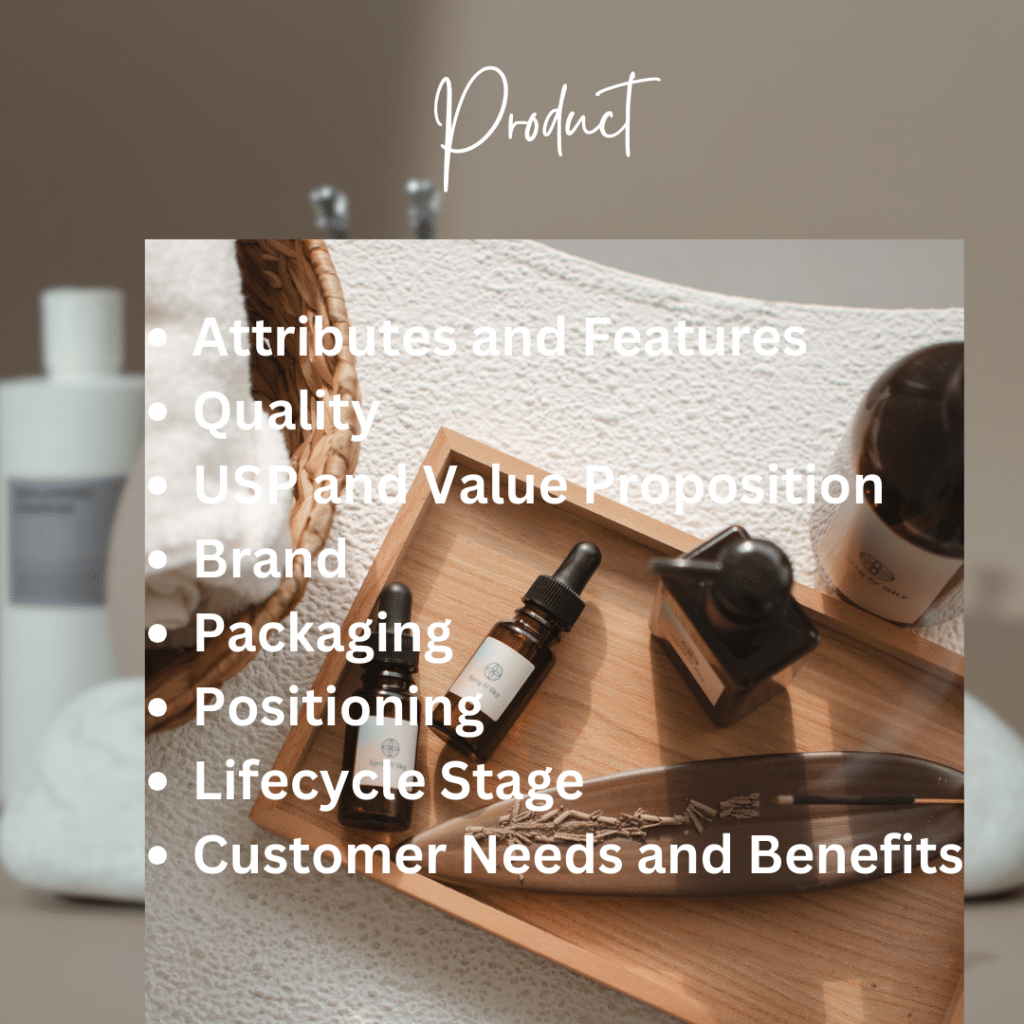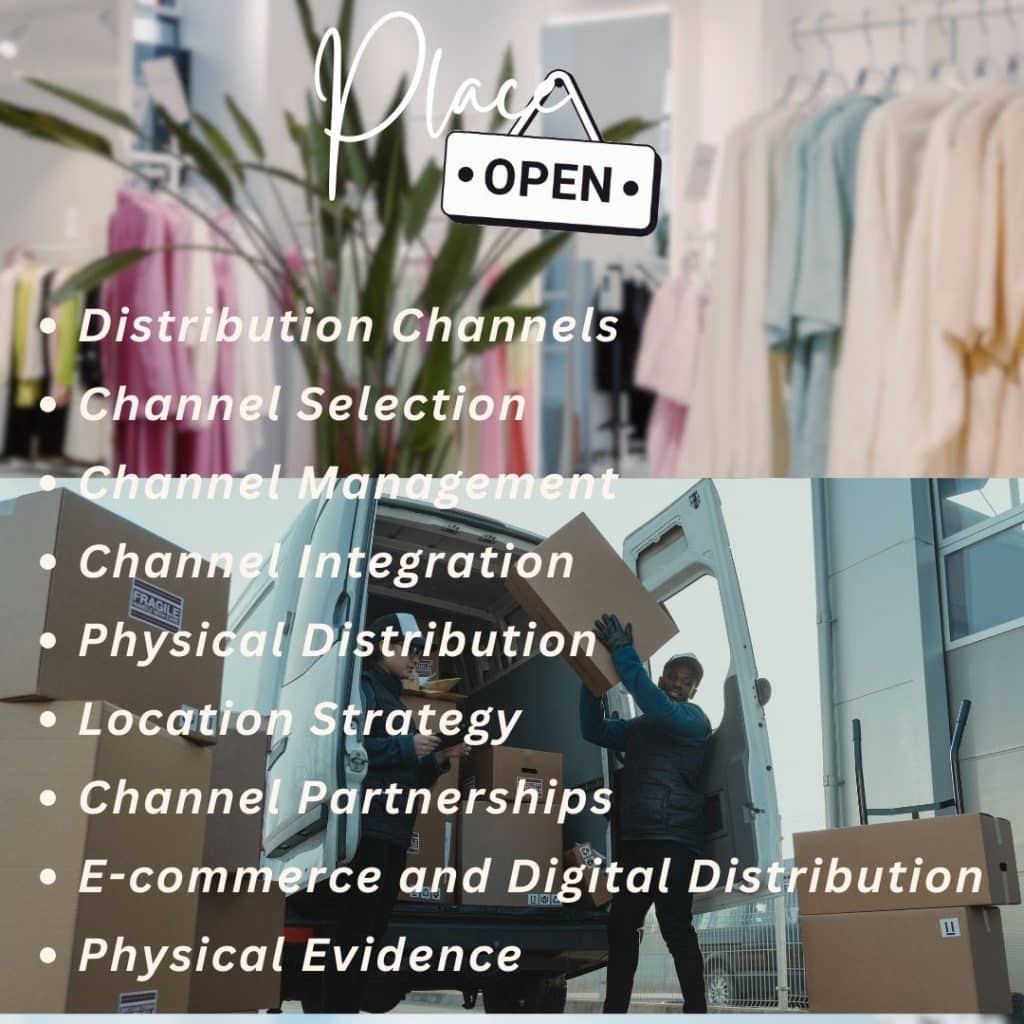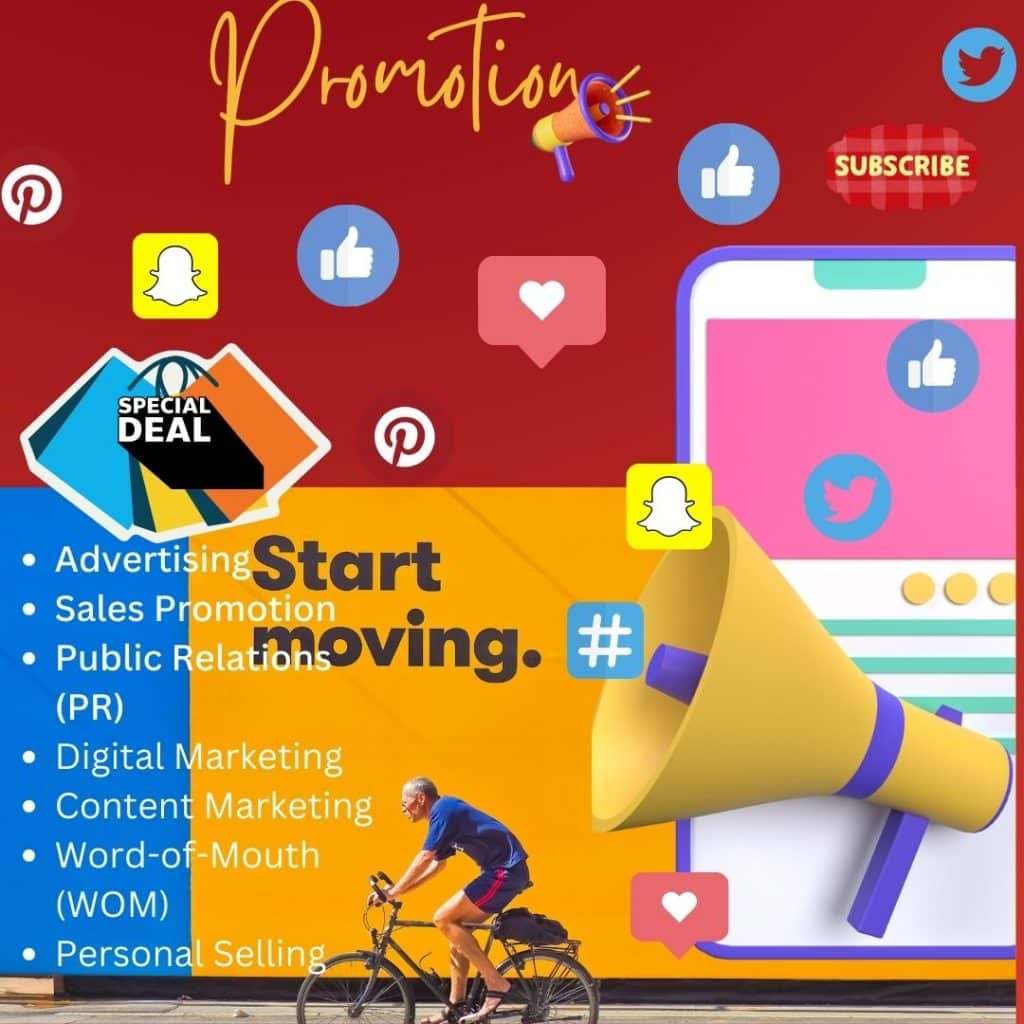The marketing mix—product, price, place, and promotion—popularly known as the 4 Ps—are the basic building blocks of any marketing strategy. Successful marketers and businesses must then use these 4 Ps of marketing when promoting or positioning a good or service for their target audience. Therefore, mastering this marketing mix is essential for the success of any marketing campaign.
Today, I want to take you on a journey through my experiences, triumphs, and lessons learned in mastering the marketing mix. Get ready, because we’re about to have an in-depth discussion about the world of marketing strategy, and I’ll be sharing some personal stories along the way.
Key Takeaways
Understanding your target audience and their needs is crucial for crafting the right marketing mix. Each P plays a vital role and should be considered together to achieve marketing goals.
Understanding The 4 P’s of Marketing
No amount of theoretical knowledge can truly prepare you for the dynamic world of marketing. It’s all about being hands-on and immersing yourself in the field. I remember when I first started in marketing. Armed with textbooks and theories, I thought I had it all figured out. But boy, was I wrong! It wasn’t until I got out there and interacted with customers, observed market trends firsthand, and experimented with different strategies that I truly began to understand the intricacies of the marketing mix. You can download the checklist below for a step-by-step guide on how to incorporate the 4Ps into your marketing campaign
When you are developing a product or service, this marketing mix will be at the center of your marketing strategy. You have to understand your target audience, your competitors, and your overall business identity and value. It is only after doing all these things that you can uniquely market your products. So what are the 4 Ps of marketing?
4 P’s of Marketing
Think of these 4 Ps as the building blocks of any marketing strategy. They complement each other to bring about the success of any marketing campaign. They include:
#1. The First P of Marketing: Product

Anything that you are offering or selling to your target audience is your product or service. It can be an actual physical product, a service, or anything at all that you feel you can sell to solve a particular need.
When developing a product, you also have to think about the brand message, packaging, and even the perceived value of your consumers relative to that of your competitors. In summary, you have to be able to answer the following questions to market your product effectively:
- What exactly are you selling?
- What need does that product solve in the market?
- Who is your target audience?
- What are the unique features of your product?
In 2024, consumers now prioritize sustainability, authenticity, and personalization in their purchasing decisions. Therefore, businesses must adapt by offering eco-friendly products, transparent sourcing practices, and customizable options to meet growing needs.
Additionally, it’s also important to test or use the product that you will be marketing. It may seem like a no-brainer, but you’d be surprised at how many marketers overlook this crucial step. I’ve always been a firm believer in practicing what you preach. That’s why whenever I’m tasked with marketing a new product or service, I make it a point to familiarize myself with it inside and out.
Whether it’s testing out a new software tool or sampling a new product, I believe that firsthand experience not only helps me understand the product better but also allows me to speak about it with genuine enthusiasm and conviction. This way, you can implement the rest of the mix into your marketing strategy or campaign.
Product Example
GoPro introduced a small, durable camera that is designed to capture action sports and immersive experiences. This product filled a gap in the market for a user-friendly camera that could withstand extreme conditions.
GoPro emphasized the product’s ability to capture unique perspectives and share experiences in a new way. Furthermore, they also targeted their distribution channels towards sporting goods stores, adventure travel retailers, and online platforms where their target audience shopped. GoPro also heavily leveraged social media, encouraging user-generated content (UGC) with the hashtag #GoPro to showcase the product in action.
All these don’t just show the innovative product, but also the overall marketing mix.
#2. The Second P of Marketing: Price

Price is the value you assign to your product. How much are you willing to sell that product for? How much is your target audience willing to pay for your product or service? Before you come up with a pricing strategy, you must carry out competitor analysis and check your production costs, your customers’ perceived value of the product, and how much they are willing to pay. Your pricing strategy will not only show the value of your product, but you also have to make profits.
Additionally, when creating your pricing strategy, you should also decide if your price will depict a luxury and exclusive product or if you want your price to be affordable for your consumers to try out. For example, some consumers will perceive your product as of low and inferior quality if it is too cheap. Conduct a comprehensive analysis of your target audience and the overall market before setting a price for your product or service.
Price Example
Rolex uses a premium pricing strategy by positioning its watches as luxury status symbols associated with craftsmanship, heritage, and exclusivity. By pricing its watches significantly higher than competitors, Rolex reinforces its brand image of quality and prestige, appealing to affluent consumers willing to pay a premium for luxury goods. Despite its high prices, Rolex maintains strong demand and brand equity, commanding a dominant market share in the luxury watch segment and generating substantial profits.
Advanced Pricing Strategies
There is an increased demand for dynamic pricing, subscription models, and value-based pricing strategies, challenging traditional pricing structures. Marketers who want to remain relevant must analyze data and consumer behavior to set prices that reflect perceived value while remaining competitive in the market.
#1. Dynamic Pricing
With the growth in data analytics and artificial intelligence, marketers and businesses can implement dynamic pricing algorithms that adjust prices in real-time based on factors such as demand, seasonality, competitor pricing, and even individual customer behavior. This pricing strategy maximizes revenue and profitability.
#2. Value-Based Pricing
Rather than just considering production costs or competitor pricing, value-based pricing focuses on the perceived value of the product or service to the customer. When you understand the benefits and outcomes that customers derive from your product or service, marketers can set prices that reflect the value they deliver, therefore allowing for higher margins and increased customer satisfaction.
#3. Personalized Pricing
Marketers can use customer data and segmentation to customize pricing strategies based on their purchasing behavior, preferences, and willingness to pay. Personalized pricing not only improves the customer experience but also strengthens brand loyalty and increases conversion rates over time
#4. Subscription Models
Subscription-based pricing models offer recurring revenue streams and promote long-term customer relationships. By delivering value-added services, exclusive content, or regular product updates through subscription packages, marketers can create predictable revenue streams and drive customer engagement and retention.
#5. Blockchain and Transparent Pricing
Blockchain technology can facilitate transparent pricing mechanisms by allowing consumers to verify the authenticity and fairness of prices. By embracing blockchain-based pricing solutions, marketers can build trust and credibility with consumers, particularly in industries where transparency and ethical practices are valued.
#6. Bundle Pricing and Cross-Selling
Bundle pricing combines multiple products or services into a single package and then offers it at a discount price, encouraging customers to purchase more items. Marketers can also leverage cross-selling strategies by recommending complementary products or services at the point of sale, increasing the average order value and maximizing revenue.
Psychology Pricing: Charm Pricing
Have you ever noticed prices ending in “.99” instead of “.00”? This is a classic pricing strategy called charm pricing. Charm pricing can influence customer perception, making a product seem slightly cheaper. For instance, a product priced at $19.99 feels more affordable than $20.00, even though the difference is just a penny. It’s a mind trick, but it is also a strategy that you can use.
#3. The Third P of Marketing: Place

Place talks about how you get your product to your target audience and consumers. It also covers your distribution channel. For example, if your product is for Gen Zs, then you know that you can mostly find them online, not preferably in physical stores. After taking note of this, you have to narrow it down to a particular place or platform online—TikTok, Instagram, etc.
One particular experience that comes to mind is when I was tasked with launching a new product line for our company. Instead of relying solely on market research reports, I decided to hit the streets and talk to potential customers face-to-face. It was through these interactions that I gained invaluable insights into their needs, preferences, and pain points—insights that ultimately shaped our marketing strategy and led to a successful product launch.
In addition, you must also consider omnichannel integration strategies that seamlessly integrate online and offline experiences. This is essential for reaching today’s interconnected consumers.
Conclusively, the importance of place in your marketing strategy is getting your products to their target audience at the right time. To define a place, you have to know where your target audience shops and the distribution channels to use.
Place Example
Starbucks operates a strategic location strategy to place its coffee shops in high-traffic areas with high consumer visibility and foot traffic. By opening stores in urban centers, office buildings, airports, and college campuses, Starbucks maximizes its brand exposure and accessibility, attracting a diverse customer base.
Starbucks’ strategic placement of stores facilitates customer convenience and impulse purchases, driving sales and revenue growth across its retail network.
#4. The Fourth P of Marketing: Promotion

Promotion is the backbone of marketing. You have created a product, priced it perfectly, and it is now available to your target audience. So how do you create awareness of your products or services? Your promotion technique should also generate revenue, not just create awareness. In promoting a product, you also have to consider where, when, and how you promote your brand.
One of the things I pride myself on is my ability to speak from a place of authenticity and authority. Whether I’m pitching a new marketing strategy to stakeholders or writing content for our website, I always draw from my own experiences and insights. It’s this genuine approach that allows me to connect with my audience on a deeper level and build trust and credibility in everything I do.
There are different ways to promote your products or services. You can decide to use traditional methods such as word of mouth, print advertisement, etc, or online marketing campaigns like content marketing, email marketing, social media marketing, etc
Traditional advertising methods are giving way to influencer marketing, user-generated content, and immersive brand experiences. Marketers must harness the power of storytelling, authenticity, and interactive content to engage audiences in an increasingly crowded digital landscape.
Promotion Example
Red Bull employs event marketing and sponsorship strategies to associate its brand with extreme sports, music festivals, and cultural events that align with its brand values of adventure, energy, and excitement. By sponsoring high-profile events and athletes, Red Bull creates immersive brand experiences that resonate with its target audience of young, active consumers.
Red Bull’s event sponsorships generate buzz and social media engagement, amplifying brand visibility and driving product trial and adoption among its target demographic.
The Importance of User-Generated Content in Promotion
As a marketer in 2024, you should look beyond the standard traditional promotional channels and strategies. It is time to leverage the power of user-generated content. You can encourage your consumers to share their experiences using your products on their social media. It is one of the most successful promotional strategies to use because others tend to believe these testimonials more.
For example, GoPro cameras make use of these UGCs in their marketing strategy. They encourage users to share their experiences using the camera, and in turn, the company shares these testimonials on their social media handles. This has boosted their authenticity and brand image. You can also choose to adopt this strategy or even modify it to suit your brand.
Innovative Approaches to the Marketing Mix
While the traditional marketing mix is still necessary, innovative approaches are changing the way we apply them in modern marketing. One such trend that has caught my attention is the rise of conversational marketing, which leverages AI-powered chatbots to engage customers in personalized, real-time interactions. By seamlessly integrating this technology into our promotional efforts, we’ve been able to enhance customer engagement and drive conversions, showcasing our adaptability in an ever-evolving marketplace.
Other innovative strategies are:
#1. Artificial Intelligence
AI has truly revolutionized the marketing mix. Businesses and marketers can use AI for promotion by showing personalized ads to consumers based on individual preferences. For example, an e-commerce store might suggest complementary items based on a customer’s recent purchases. In addition, almost everyone is using chatbots to provide 24/7 customer support and answer basic FAQs
#2. Direct-to-Consumer (D2C)
Now, you can cut the middleman and sell your products directly to your consumers using your e-commerce platform. With this, you will have greater control over your brand messaging, pricing, and even customer relationships.
#3. Omnichannel Marketing
You can embrace omnichannel integration into your marketing mix. Here, you can unify your offline and online presence, leading to an easy transition between online research and in-store purchases. Additionally, with this, you will ensure that your messaging and branding are consistent across all channels.
#4. Influencer Marketing
As a marketer or business, you can partner with relevant influencers whose values and target audience align with your brand. Using influencer marketing, you can develop genuine partnerships where influencers can authentically integrate your product into their content.
#5. Sustainability
In 2024, consumers are concerned about the environmental impact of a business and its products. Therefore, you can focus on sustainable materials, ethical sourcing practices, and eco-friendly packaging. Show them in your marketing messages, and showcase certifications or partnerships with sustainability organizations.
How to Adapt and Remain Relevant in the Ever-changing World of Marketing
Netflix started as a DVD rental service (place) but adapted to the changing needs of its customers by shifting to a streaming model (place) with high-quality, original content (product differentiation), which is delivered conveniently through various devices (place). This ability to adapt their marketing mix has been a key factor in their continued success.
The world of marketing is not fixed; new and better technologies emerge every day, and consumer needs and preferences are also changing, so marketers as well as businesses need to evolve with these changes. Some of the ways to remain relevant in marketing include;
- Embrace market research and data analytics
- Be flexible and willing to experiment
- Monitor and Measure
- Embrace omnichannel marketing
- Stay on top of marketing tech trends
- Foster Continuous Learning
- Embrace Innovation
- Embrace Personalization
- Invest in Sustainability
What are the 4Ps and 7Ps of Marketing?
The 4Ps of marketing are product, price, place, and promotion, while the 7Ps include people, process, and physical evidence alongside the 4Ps. These are the basic ingredients used to formulate marketing strategies and plans.
What are the 4Ps and 4Cs of Marketing?
The 4Ps of marketing are product, price, place, and promotion. The 4Cs of marketing are customer, cost, convenience, and communication.
Which of the 4 Ps of Marketing is most Important?
The importance of each of the 4 Ps (product, price, place, and promotion) varies depending on the context, objectives, and target market of a business. However, the product might often be considered most important as it forms the foundation of a successful marketing strategy, influencing pricing, distribution, and promotional efforts. Overall, each P plays a vital role in a holistic marketing strategy.
What is 4Ps Kotler?
The 4Ps of Marketing (Product, Price, Place, Promotion) by Philip Kotler outlines the key elements to consider when crafting a marketing strategy—the core elements of the marketing mix. It highlights understanding your target audience and creating a cohesive mix. Essentially, it’s your marketing recipe for success!
Conclusion
I’ll never forget the flutter of emotions I experienced during my first major marketing campaign. There were moments of doubt, frustration, and even fear. But there were also moments of sheer excitement and satisfaction when our hard work paid off and we saw the impact we were making on our target audience. It’s these personal highs and lows that make marketing such a thrilling and rewarding journey.
Marketing isn’t just about data and metrics—it’s about connecting with people on a deeper level. Remember, marketing is equal parts science and art. It’s about embracing the unknown, taking risks, and learning from both your successes and failures.
The marketing mix may seem like a complex concept, but it’s a powerful tool that can help you create winning marketing strategies. Remember, it’s about understanding your target market, crafting a compelling offering, getting it in front of the right people, and building excitement around your brand.
By mastering the 4 Ps and adapting your mix to a changing landscape, you can turn your business into a marketing masterpiece
- PRODUCT LINE: Types, Examples, and How It Works
- POSITIONING STRATEGY: What Is It & How Does It Work?
- Top 5 Strategies To Grow Your Staffing Agency
- Promotion Mix: Definition, Types, Importance, & Strategies
- The 4 Ps Of Marketing: What They Are And How To Apply Them






